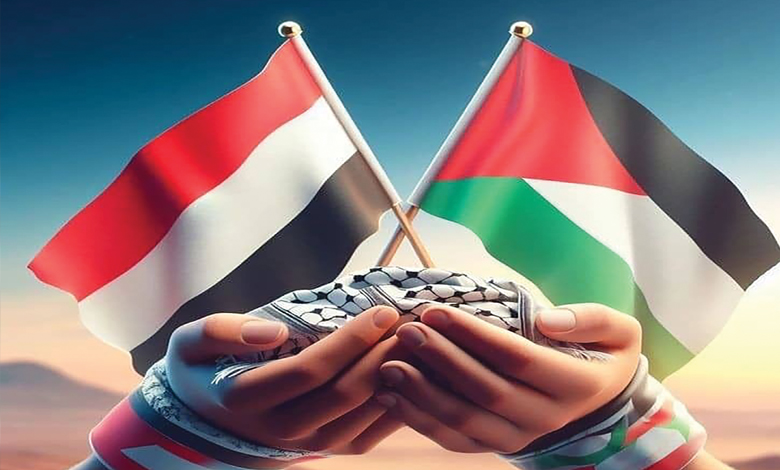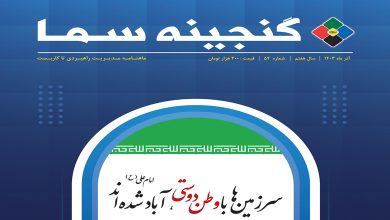Part Two: Soleimani and the Battlefields – A General Without Borders (Section Two)

 Political Section
Political Section
Yemen: Strategic Support Against Hegemony
In Yemen, Soleimani closely monitored developments and coordinated logistical and technical support with Ansarullah to weaken the American axis in the peninsula and prevent control over the Bab al-Mandeb Strait. Unverified reports suggest that in secret meetings with Ansarullah leaders, defensive technologies, including missiles and drones, were transferred.
This support strengthened Yemen’s defensive capabilities against the Saudi-led coalition and enabled Ansarullah to conduct offensive operations against strategic targets. Soleimani viewed Yemen as an integral part of the unified resistance front and emphasized its strategic importance in cutting hegemonic arteries. By analyzing Yemen’s geography and the strategic position of Bab al-Mandeb, he helped Ansarullah develop defensive and offensive strategies that disrupted Saudi coalition calculations.
In these theaters, Soleimani combined intelligence analysis, deep knowledge of geography and local structures, and the integration of military power with spiritual influence to create a unified front. His presence on the front lines—in Iraq’s deserts, Syria’s mountains, or through coordination with Yemen—not only guided operations but inspired fighters through humility and empathy. Images and videos of him alongside troops, in simple military attire and without ceremony, reflected his leadership style rooted in courage, modesty, and direct connection with combatants.
Lebanon and Palestine: From Covert to Open Support
In Lebanon, Soleimani acted as a bridge between Hezbollah leadership and the IRGC, but more than that, he was a close friend of martyrs and a constant companion of southern Lebanon. He participated in the 2000 liberation, the July 2006 war, and preemptive operations after 2010. During the 33-day war, he not only supplied weapons and intelligence but also boosted fighters’ morale through nightly meetings. Hezbollah commanders recount that he repeatedly visited dangerous areas in southern Lebanon and maintained deep, fraternal relations with Sayyed Hassan Nasrallah. His presence near enemy positions conveyed firmness and commitment to resistance.
In Palestine, Soleimani supported Hamas and Islamic Jihad with funding, armament, training, and spiritual guidance. The development of the “Fajr” rockets in Gaza was rooted in his direct involvement, and Operation “Sword of Jerusalem” (2021) demonstrated his enduring impact on Palestinian resistance capabilities. He viewed Palestinian resistance as the spearhead in the fight against the Zionist enemy, emphasizing unity of fronts in his correspondence with resistance leaders. This support, including missile technology transfer and operational tactics, elevated Gaza’s offensive capacity to unprecedented levels.
Afghanistan: From Periphery to Center
In Afghanistan, Soleimani coordinated anti-Taliban operations with precise knowledge of the terrain. He established security relations with Hazara and Shia leaders, including Ahmad Shah Massoud in the 1990s, creating a balance that prevented total Takfiri domination.
By establishing intelligence and logistical networks, he assisted local resistance groups in standing against Takfiri threats. These efforts were part of his broader strategy to maintain the strategic depth of the resistance axis.
A General Who Shattered Colonial Plans
Soleimani’s global mindset disregarded the artificial Sykes-Picot borders. He viewed the land from Iran to the Mediterranean as a strategic unit—not as expansionist intervention, but as preemptive defense of Iran, Jerusalem, resistance, and identity. By integrating strategic rationality with practical mysticism, he not only led operations but built a resistance network that did not collapse with his martyrdom on January 3, 2020, but rather became more widespread.
His massive funeral in Iran and Iraq, and memorial ceremonies in Lebanon, Syria, and Yemen, reflected his profound influence. Missile strikes against U.S. bases in Iraq and Hezbollah operations after his martyrdom drew inspiration from him. His letters to the Supreme Leader and fighters, some published posthumously, revealed the depth of his thought and faith. Through his simple lifestyle, nightly prayers, and close ties with martyrs’ families, he became a legend who conquered not only military equations but also hearts across the region.
Soleimani was the moving conscience of the resistance, operational mind, and faithful guardian against the storm. With precise geographic understanding, coordination among diverse factions, and strategic-psychological planning, he not only broke enemy encirclements but also laid a foundation for resistance that inspired future generations.
Operational Creativity in Multi-Layered Battlefields: Al-Bukamal, Al-Qusayr, Aleppo, and Amerli
Haj Qasem Soleimani was not merely a military commander directing operations remotely; he was a field engineer and architect of war, present in the heart of high-risk and complex areas, personally leading the battlefield and establishing a school of operational thought grounded in field creativity and direct presence.
Al-Bukamal: Breaking the Siege on the Eastern Border
In the battle of Al-Bukamal, ISIS’s last major stronghold on the Syria-Iraq border, Soleimani played a strategic-operational coordination role across multiple layers and regions. The area was not just a geographically isolated pocket but a nexus of international interests; U.S. forces were stationed to the east, while the Syrian army and allies advanced from the west.
Soleimani’s operational creativity shone through multi-axis attacks and the integration of diverse allied groups—from the Syrian army to Hezbollah, PMF, Nujaba, and Fatemiyoun. Despite structural and cultural heterogeneity, he united them under a single command, transforming Al-Bukamal into a “united front against Takfiris.” He applied the principle of “temporal surprise,” launching the main attack after a series of deception operations that disoriented the enemy and broke its defensive lines.
Al-Qusayr: Restoring Initiative and Balance
The battle of Al-Qusayr in southwestern Homs was pivotal not only in Syria’s war trajectory but also in Soleimani’s command experience. At the time, the balance of power favored regionally and Western-backed armed groups, and the fall of Al-Qusayr could have collapsed central Syrian defense lines.
Soleimani viewed the battle unconventionally, considering it the “strategic heart” that could not be lost. He participated directly in field planning alongside Hezbollah commanders and employed a new model of “engagement in tunnels and agricultural lands,” where advancing forces bypassed enemy centers via narrow farm paths and pinned the enemy using snipers and precise artillery.
Beyond the technical aspect, the psychological dimension was crucial: Soleimani insisted on ground-based operations to boost allied morale and send a clear deterrent message to enemy axes. The result was a reversal of the military balance in central Syria.
Aleppo: Managing Geographic and Demographic Complexity
Aleppo was the most challenging urban battlefield in the Syrian war—not only due to its size and diversity of armed groups but also because of sectarian and demographic complexities and overlapping interests of international powers, particularly Turkey and the U.S.







